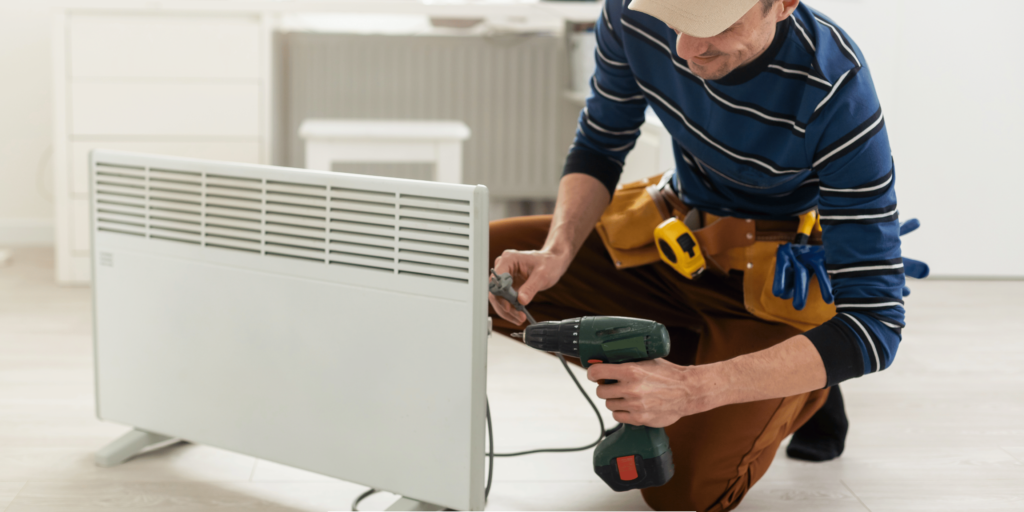Introduction to Sunrooms
A sunroom, or solarium, is a house addition mainly made of glass, which lets the sun’s heat into the room. Sunrooms became common during the early twentieth century, with the use of Victorian architecture, which included more light and connection with the exterior.
In today’s sunrooms, they also take advantage of natural light by including several windows and glass doors if possible. They increase the size of a living space horizontally and often provide lovely views of the garden. Nonetheless, what stands out most in these designs is the high usage of glazing, which presents new challenges in regulating the internal environment of the building.
Heating Options for Sunrooms
One disadvantage of sunrooms is that it can be hard to heat during the cold months since glass is not very insulating.
Here are some of the most common and effective heating methods:
Solar Heat Gain
The sun being warm, especially in winter, warm golden rays of sunlight coming into the sunroom through the glass windows or doors can effectively warm the house. Toward this, we can place materials with high thermal masses, such as tile floors, brick walls, or containers of water, within the sunroom to absorb the solar heat during the day. The accumulated heat is then gradually released during the night to assist in regulating temperatures.
Electric Heaters
At $30-$300, space heaters with built-in thermostats are cheap and efficient portable electric heaters for heating. Oil-filled radiator heaters or fan-forced heaters blow hot air around the room, ensuring that it is evenly warmed. As for safety, there are some tips that should be considered: Don’t leave portable heaters operating when you are not in the room.

In-Floor Radiant Heating Systems
Electric or hydronic radiant floor systems, installed underneath tile, wood, or laminate floors, warm the room with gentle heat. They give steady, non-blade-like heat rising, first, to solid mass floors. The floor warmth then gradually diffuses upwards and throughout the room. Radiant floor heating is efficient in heat usage and has the advantage of not occupying wall space.
Forced-Air Heating
If forced-air heating is present in a house and the sunroom is to be added later, then the existing forced-air vents can be redirected, or new vents from the central heating system can be installed to bring the warm air from the rest of the house into the sunroom. Make sure that the extra load does not strain the central heating system too much. Sealing air leaks from windows, doors, and installations also assists to trap heat in a room or building.
Cooling Options for Sunrooms
In scorching summer days, all the glass used in construction of the sunroom makes it so hot that it can be compared to a greenhouse. Prevention of overheating is achieved by proper shading and cooling.

External Shading
Awnings, roof overhangs, exterior roll-down shades, or outdoor curtains that must be lowered before getting into the sunroom reduce the amount of solar heat gain to between 80-90%. They shield the glass surface from direct sunlight while at the same time allowing adequate light to penetrate the room.
Indoor Window Treatments
Shades, blinds, and drapes are interior window treatments that help to cool the inside by preventing direct solar heat from entering the room. Choose proper roofing materials, such as reflective ones or those that are lighter in color to reflect heat back out. Natural fabrics such as cotton also help minimize SHG better than synthetic fabrics.
Natural Ventilation
This is because the circulation of air with the windows opened or with the use of a ceiling fan enables hot air to be drawn out while at the same time, fresh cool air is drawn in. This is most effective in the evening when the temperatures outside are relatively low. Close all windows during the day, especially when the sun is hottest, to reduce heat getting into the house.
Evaporative Coolers
For instance, evaporative coolers, also referred to as swamp coolers, are suitable for use in areas with low humidity. The units take in dry outside air through water-soaked pads and then pass this cool air through the room with a large fan. Just remember to shut the windows at night to keep the cool air in the room.
Air Conditioning
Air conditioning is the only solution of maintaining the temperature in regions which are hot and humid. A ductless mini-split air conditioning system enables a different temperature in only the sunroom without having an impact on the other rooms. The unit must also be appropriately dimensioned for the room to ensure that it occupies optimum space. Ensure one does not open doors and windows when the air conditioner is on.
Conclusion
If the design of the sunroom is done correctly, it is possible to have a comfortable climate throughout the year. In-floor radiant heat and cooling selections such as awnings and exterior solarium shades also help regulate the solarium from becoming overly hot. Identify the efficient approaches that respond to your climate and financial conditions to adapt your sunroom for year-round living.

